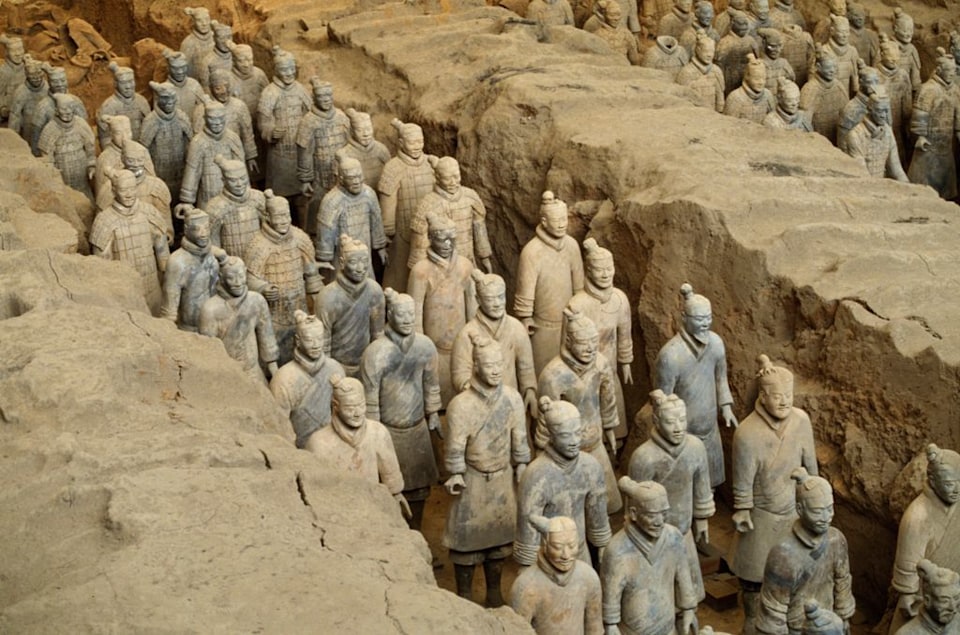On March 29, 1974, a group of farmers in China’s Shaanxi province made an extraordinary discovery that would change history.
Yang Zhifa, along with his five brothers—Yang Quanyi, Yang Peiyan, Yang Xinman, Yang Wenhai, Yang Yanxin—and their neighbor Wang Puzhi, were digging a well in a field of pomegranate and persimmon trees, just an hour northeast of Xi’an. As Yang Zhifa’s shovel struck something solid about 15 meters below the surface, they unearthed a terracotta head, which they initially mistook for a statue of Buddha.
“At first, all we saw was the top of a head,” Yang Quanyi later recalled to The Mail on Sunday. “Then, as we dug further, we saw the whole head.”
Believing it to be a bronze relic of value, the farmers broke it off with a hammer, intending to sell it. However, fear quickly set in. “Everyone was afraid to touch it,” Yang Quanyi said, explaining that locals worried about the consequences. “We were frightened that the Buddha would punish us.”
The farmers’ lives changed dramatically from that moment. Government officials and archaeologists soon arrived to excavate the site, and the land was claimed by the state. Any compensation was misappropriated by officials, and several members of the original group lived out their days in poverty.
“We got nothing for the discovery,” Yang Quanyi lamented. “It was the days of collective farms, and we were given ten credit points by our brigade leader for finding the warriors. That was the equivalent of about one yuan [5p].”

It soon became clear that their find was far more significant than they had imagined. They had uncovered one of 8,000 life-size terracotta warriors, archers, horses, and charioteers buried across a vast seven-square-mile area. Dating back to the 3rd century BCE, these figures were part of the tomb of Qin Shi Huang, China’s first emperor. The warriors, arranged in battle formation, still stand facing east—the direction from which the emperor’s enemies once came.
Though we now see the Terracotta Army as rows of earthen-colored statues, they were originally painted in vibrant hues, which faded upon exposure to light and oxygen. Each warrior, weighing up to 272 kilograms (600 pounds), was crafted with unique facial features, attire, and posture, reflecting the individuality of real soldiers.
The mausoleum of Qin Shi Huang remains sealed to this day, leaving the world to wonder what further secrets lie beneath the ancient soil of Xi’an.

